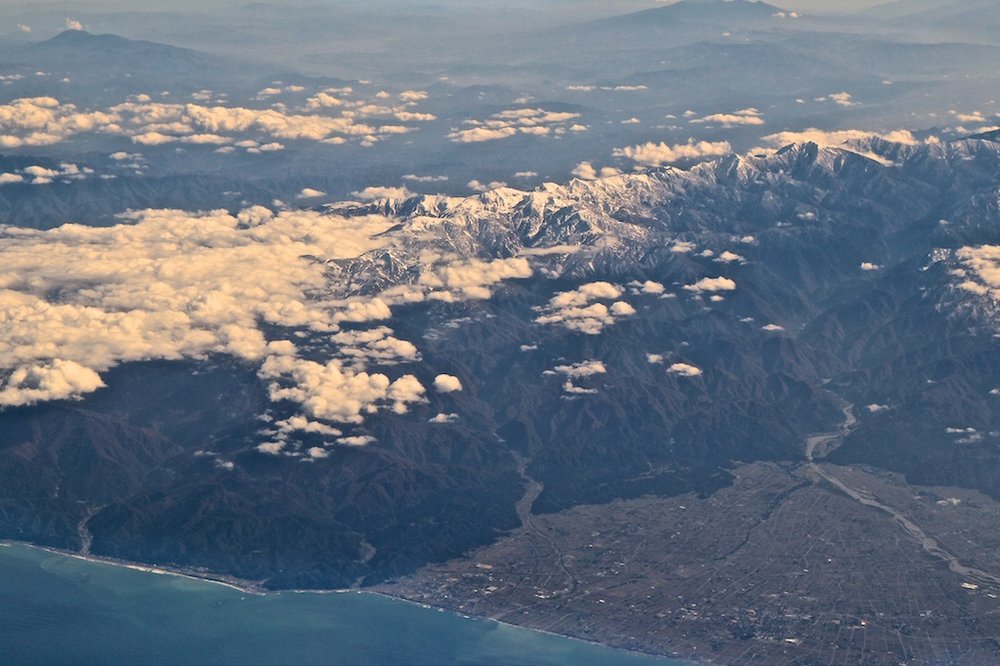Japan's National Treasure

I went back to the photos from my recent Japan trip after Tiffany Soto, the master sake sommelier working with Ichishima, told us about the Niigata prefecture. What was it she said? Something about the western coast of Japan, tucked between snowy mountains and the ocean, I think. That sounded familiar. Then I remembered why.
When we were descending in the Hello Kitty plane, getting ready to touch down in Sapporo, we flew over the western part of Japan and I started snapping photos through the window just to test out my new lens. Sure enough, I had taken a photo of Niigata—the region of Japan known for its pristine sakes (not a great photo, but at least one that shows the region in the bottom right, locked between the mountains and the sea). I've been very curious about Japan's national drink since my visit last week, so I've been doing a bit of research lately, hoping to find some answers to the questions I had. Beau Timken's book Sake: A Modern Guide has been a big help.
First off: does Japan really drink that much sake? Apparently, yes. Tons. By the beginning of the 18th century there were more than 27,000 breweries around the country. That's in the year 1700. That's crazy! Rice was and continues to be everything to Japan, and sake respresented both the spirit of rice and of the people eating it. It's around that time that regionally specific flavor profiles began to develop, matching the cuisine of each particular locale. Since Niigata is close to the sea, the sakes made there are light, elegant, and perfect for pairing with delicate seafood flavors.
If sake really is that big in Japan, how did it become so diverse? Good question. The answer lies in the first national sake competition, sponsored by the National Research Institute of Sake Brewing in 1904, that challenged brewers from around the country to create the best possible sake they could. The competition not only became the biggest thing Japan had ever seen, it also helped to classify and categorize sake into different grades and types. It was like Japan's version of the 1855 Bordeaux Classification. Then in the 1970s, in response to an artisanal shift, the brewers who normally reserved their best sake strictly for the yearly national competition began producing their special sakes year round. Now I understand why our new Ichishima Ginnoyorkobi Daiginjo sake is called "Competition" on the label. It won the contest in 2007, 2008, 2009, 2010, 2011, and 2014. Six times (so far)!
Why is some sake fortified (honjozo) and some not (junmai)? Apparently all sake was unfortified up until WWII when rice suddenly became a precious commodity—too precious for making sake. It was discovered, however, that by adding inexpensive distilled spirits to sake it was possible to create a different style that used far less rice. So why didn't the more alcoholic honjozo sake die out after the war ended? Because an entire generation got used to drinking that style of sake and didn't enjoy the lighter, crisper sakes that came back around after the conflict. Tastes had changed by that point.
Booze is fascinating. I'm really starting at the beginning here with sake and it's giving me the same type of excitment I felt when I first began my whisky education.
More later.
-David Driscoll
